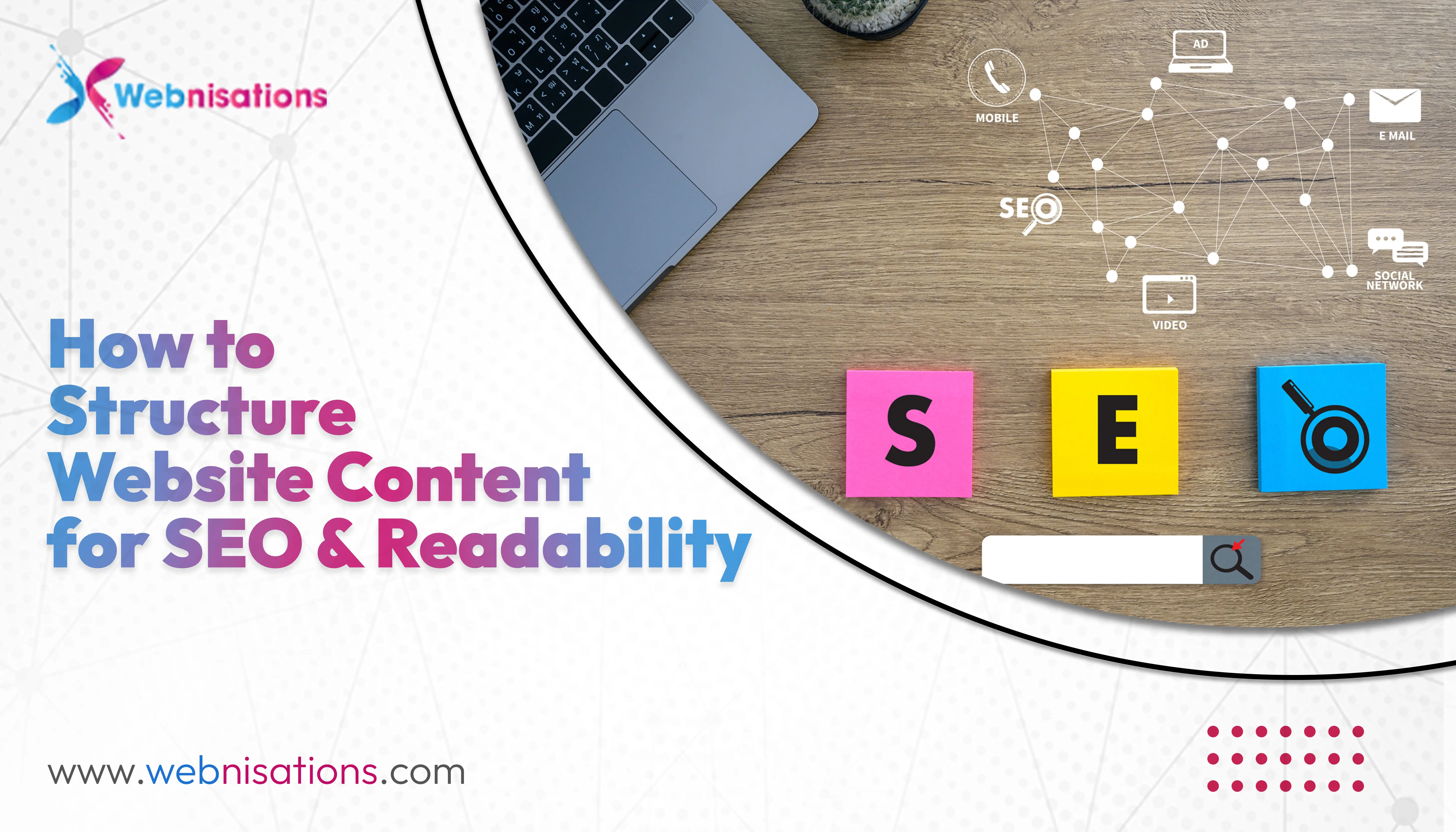-
Services
- Custom Web Design & Development Get your ideas developed into your own style with a customized website.
- WordPress Development A unique optimized WordPress website customized to your requirements.
- E-commerce Web Development Get your business online with a fully customized e-commerce website for your brand.
- Web Applications & Portals Get your own unique web applications and portals for your brand.
- SEO Improve the quality of the reach on your web pages with detailed search engine optimization of your brand.
- Domains and Hosting Mobile Application Development Logo Design Branding Video Animation Content Writing Website Management Digital Marketing
- Packages
- Client Reviews
- Portfolio
- Blog
- Contact Us
- Select your business
How to Structure Website Content for SEO & Readability

Introduction
In the world of the internet, a website is not enough. If your website is going to do well, it has to get the balance between SEO and readability just right. Well-structured website content not only helps you attract the attention of your visitors but also helps to improve your rankings in search engines. This blog will show you the way to structure your website content in a manner that can serve both purposes.
1. Begin with a Clear Structure
A rational content structure is the key foundation of a friendly website. Organize your content with headings and subheadings (H1, H2, H3). Your main topic should be clearly indicated with the H1, with H2 and H3 breaking down information into easily digestible chunks. This structure helps search engines understand the context of your content, improving SEO design.
2. Make Use of Short Paragraphs and Bullet Points
Long sentences can be powerful in terms of overwhelming your readers and increasing the rate of bouncing. Keep the sentences short; ideally, two or four words long. Bullet points and numbered lists are good ways to get the point across. This is helpful for readability, and it will allow your visitors to easily scan your content and point out key points.
3. Optimize for Keywords Naturally
Keyword incorporation is essential in SEO, nonetheless. Find some critical and secondary keywords on your subject and use them naturally throughout your content. Don't keyword stuff - include keywords in your titles, meta descriptions, and headings. A natural flow helps your content to be easily read without compromising SEO.
4. Insert Internal and External Links
Internal linking is by far the best way to link relevant pages in your site for better site navigation and SEO structure. External linking to credible sources adds credibility and added value to your readers. Combined, the links improve your SEO performance on the site and build trustworthiness.
5. Employ Engaging Visuals
Images, infographics, and videos break up text-heavy pages and add appeal to content. Optimize graphics using descriptive alt tags and related filenames for better SEO Visual content not only attracts readers in, but it is also part of an effective SEO design plan.
6. Focus on Readability and Tone
Writing in an informal style allows content to be easy to read. Short sentences, familiar words, and active voice all contribute to the ease with which your readers may spend more time on your site, which search engines can indicate is content worth reading.
7. Meta Tag Optimization and URLs
Meta titles, meta descriptions, and URLs are essential from both an SEO and user experience perspective. You must ensure that your meta title is interesting and contains your primary keyword. URLs need to be short, descriptive, and memorable. They help search engines to properly index your pages and also help to direct the users to your content in an efficient manner.
Conclusion
Organizing your website content in the proper manner with readability and SEO. By following the hierarchy of your content, with short paragraphs, a natural flow of keywords, links, and images, and meta element optimization, you'll be able to create content that will attract search engines and human readers. We specialize here at Webinisations in designing high-performance content frameworks that not only improve SEO design but also improve the overall user experience.



